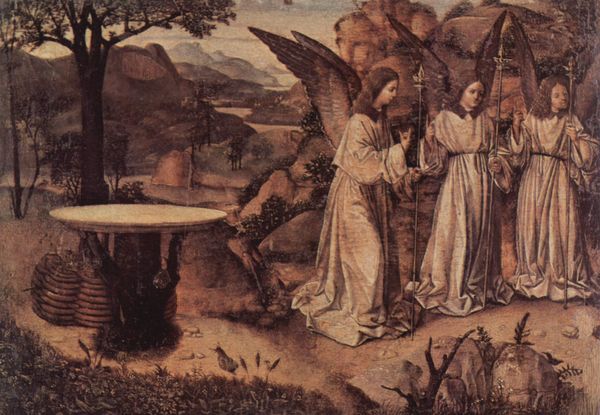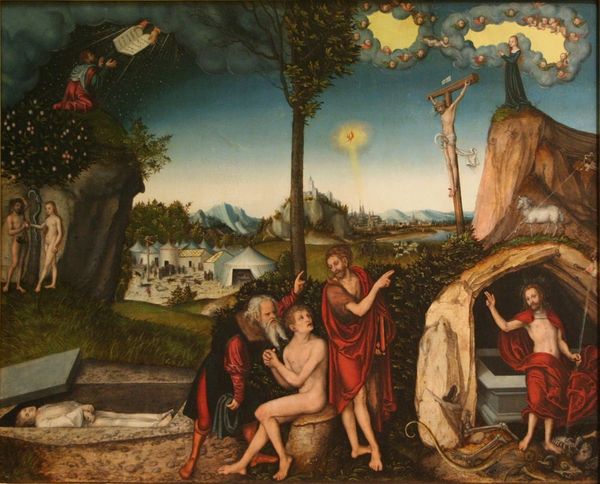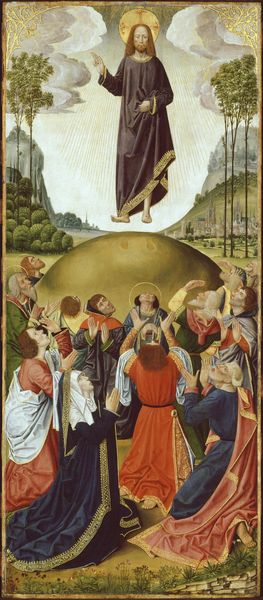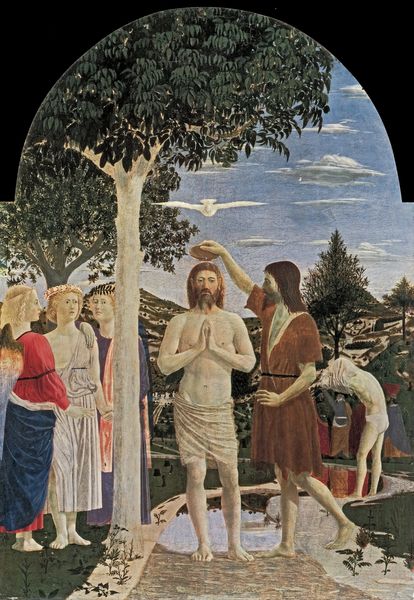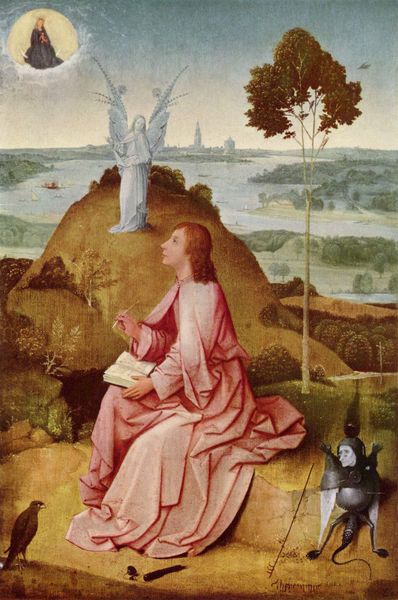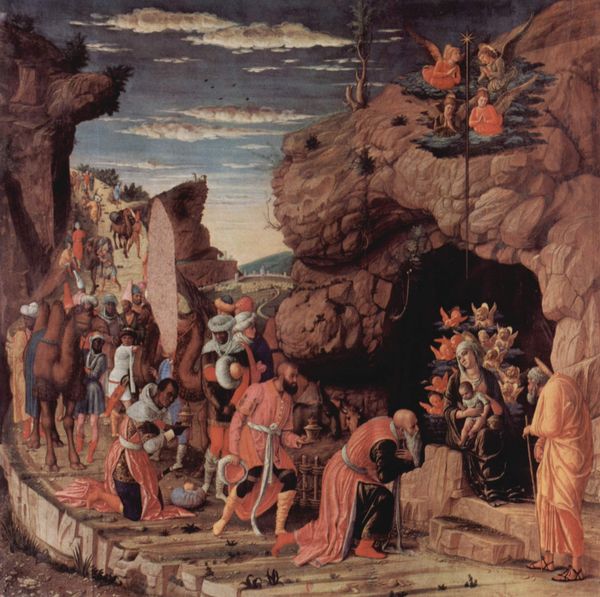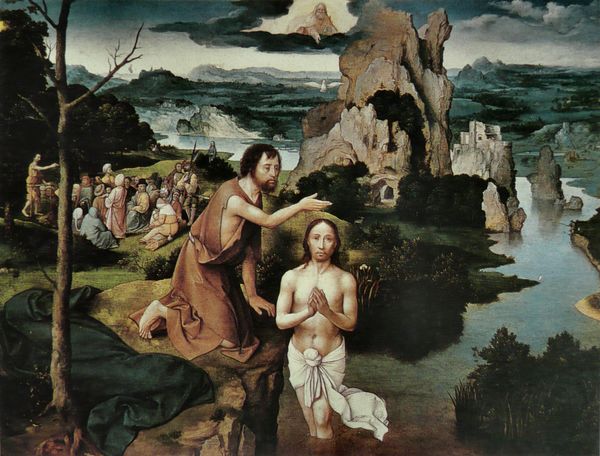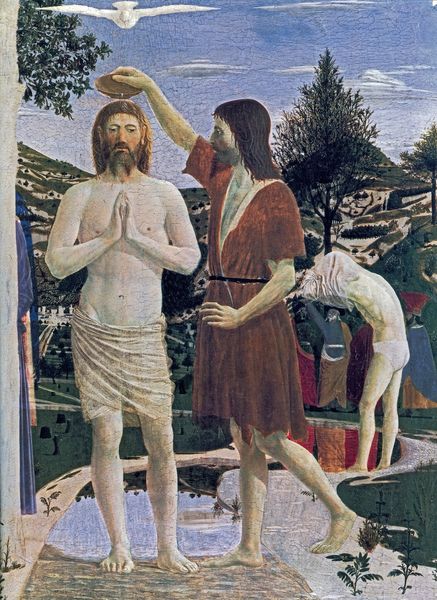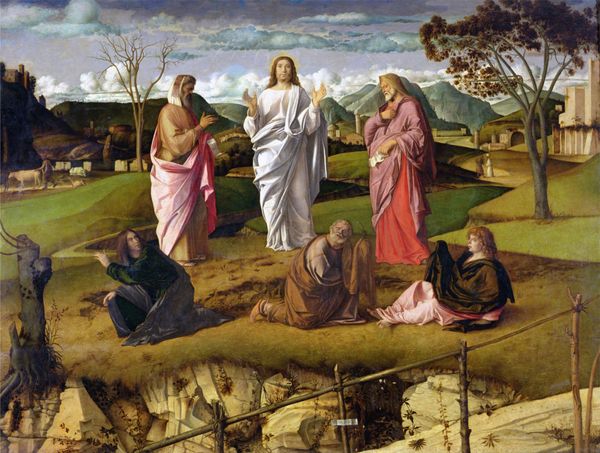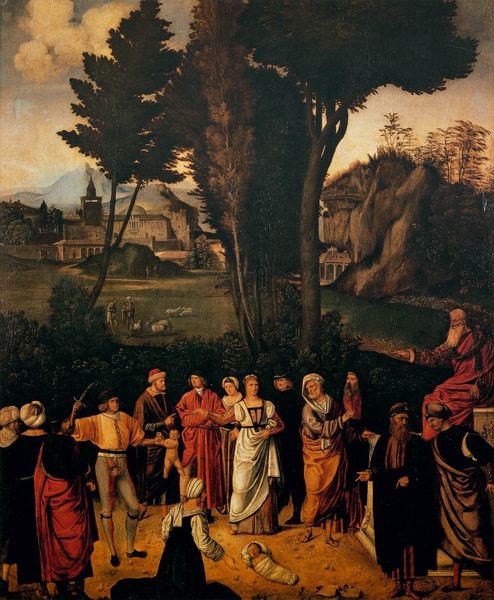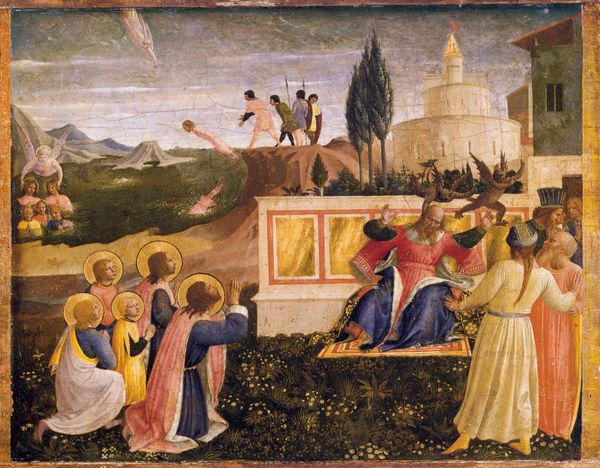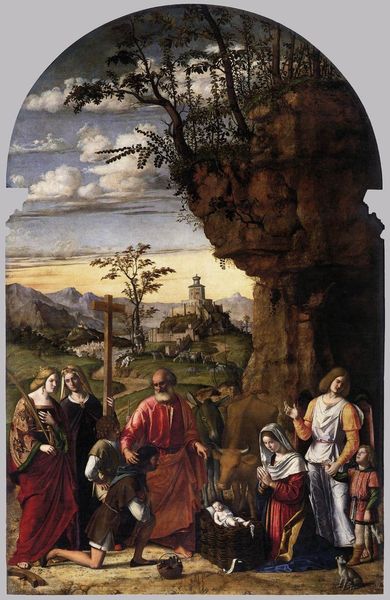
painting, oil-paint
#
narrative-art
#
painting
#
oil-paint
#
landscape
#
figuration
#
oil painting
#
christianity
#
early-renaissance
#
angel
Dimensions: 115 x 69.5 cm
Copyright: Public domain
Curator: Dirk Bouts’ oil painting, "The Way to Paradise", created around 1468, invites us to contemplate a specific vision of Christian salvation. It's currently housed at the Palais des Beaux-Arts de Lille in France. Editor: My initial reaction is drawn to the striking compositional arrangement – the figures processing towards an almost dreamlike vision in the background. It's serene, yet strangely… orderly. Curator: Indeed. That "order," I believe, reflects the socio-religious ideologies of the Early Renaissance. We must consider the prevailing beliefs surrounding sin, redemption, and the role of the Church in guiding believers toward salvation. The figures, seemingly uniform in their purity, are almost devoid of individual agency, reflecting the prescribed path to redemption within the prevailing dogma. Editor: I'm intrigued by how Bouts uses light. Note the way it illuminates the faces of those figures, yet also subtly directs the gaze towards the divine promise represented by the paradise that lays beyond them. Curator: It is deliberate, drawing from the accepted symbolic and religious rhetoric that governs the painting; you could even relate it to notions of the “male gaze”, with Eve at the front being naked. However, I question this supposed divinity as it clearly borrows from real, yet hierarchical places. Editor: Ah, you draw from gender studies while approaching it from a socio-historical perspective. I appreciate how he structures the space with implied geometry that really underscores the depth of the planes that allow him to include various scenarios simultaneously. Curator: That perspective itself becomes a symbol of hierarchical value. Those at the forefront, closest to divine judgement or, conversely, furthest from paradise, must reckon with a set of societal and spiritual requirements, while others merely proceed to worship in a very structural manner. It poses questions about societal structures – who is deemed "worthy" and who dictates the terms of entry into paradise. Editor: Agreed. Looking closer, it seems less serene and perhaps more…clinical. There is almost something too artificial about the orderly procession that betrays the emotional reality of mortality. A paradox there that’s worthy of deeper study. Curator: It’s that artificiality that underscores Bouts' reflection of how religious doctrine impacts earthly lives. Considering these nuances helps deconstruct the idea of divine salvation presented and, perhaps, examine how societal expectations shape identity. Editor: A potent intersection of technique and social commentary. Well observed.
Comments
No comments
Be the first to comment and join the conversation on the ultimate creative platform.
